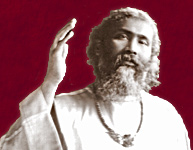Volume X - Sufi MysticismPrefaceThe eight chapters of Sufi Mysticism consist of lectures, delivered on various occasions, in which Hazrat Inayat Khan tried to explain something of the essence of mysticism. He also tried to give a glimpse of the life and work on earth of the mystics, those beings who, through their advanced state of evolution, and through their constant contact with the unseen and the unknown, 'hold aloft the light of truth through the darkness of human ignorance,' in the words of the Sufi invocation. Because so many people are apprehensive of the word 'initiation,' believing it to mean a kind of mysterious ordeal one has to go through, Inayat Khan repeatedly explained its real significance – for example, in, The Way of Illumination, (Vol. I of this series, pp. 46-53). When asked what initiation involved, he often replied that it was 'a blessing and a welcome.' The Path of Initiation and Discipleship is a collection of lectures and papers in which the different stages and aspects of initiation and discipleship are set forth in a comprehensive form. It may serve as a guide to those who wish to learn more about the esoteric activity of the Sufi movement. Coming himself from a long line of Sufis, both on his father's and on his mother's side, it is natural that Inayat Khan should have greatly revered the Sufi mystics and poets of the past. They have not only left an indelible mark on the poetry, religion, and philosophy of the east, but have also, in their own age and later, deeply influenced western thought. In Sufi Poetry, some of the greatest of these poets are described, their lives and their work, their experiences and their characteristics. The divinity of art, its mystical aspects, and its social significance were subjects that were never far from Inayat Khan's mind. Before he left India in 1910, he was a famous musician, singer and poet. When he arrived in the west to bring his message of Sufi wisdom, he used his art, especially during the first years, not only as a means of livelihood, but also to convey the basic Sufi philosophical and mystical concepts to those who came to see and hear him. Thus, one of the first series of lectures to appear in book form was The Mysticism of Sound. Another early series, called Music, was published together with it in Volume II of the present edition. In order to make people in the west better acquainted with Sufi ideas, the Sufi movement also published in those early years several small volumes containing poetry by Persian and Indian Sufis, including translations of Inayat Khan's own poems. These will be republished in a later volume. During the last two years of his life, the Pir-o-Murshid delivered a series of lectures on many different aspects of art, including painting, sculpture and architecture, which were published after his death under the title, Yesterday, Today, and Tomorrow. It is this book which appears in the present volume in a slightly modified form. Hazrat Inayat Khan's aesthetic standards differ, on some points, from the values that are generally accepted in the western world, as does the terminology he uses. It is necessary to bear this in mind when following the Sufi mystic's trend of thought. In fact, Inayat Khan always approached his subject as a mystic, whose principal aim in this case was to place art in its proper perspective, not so much as an achievement of man, but as a manifestation of God through man. Therefore, he does not describe ancient forms of art as a historian would, nor does he speak as an art critic about modern art. He merely takes some instances and examples to illustrate the points he wants to emphasize. To make this clearer, several chapters of a more general character have been included, and a few passages have been deleted which referred to situations and art movements at the beginning of the century which have lost most of their actuality. The Problem of the Day forms the last part of this volume. It consists of lectures on the present need of mankind. In these, Inayat Khan stresses the fact that if, in our times, man has gone so far astray morally, it is principally because of his declining interest in religion and because of his lack of a higher ideal. checked 18-Oct-2005 |

